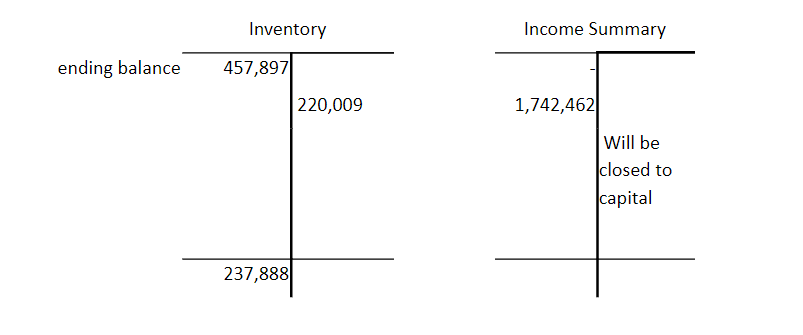- Compute the cost of goods sold under a periodic system and create journal entries
What we have now learned is that using the periodic inventory system the cost of goods sold (COGS) is computed as follows:
Beginning inventory + (Purchases, net of returns and allowances, and purchase discounts) + freight in − Ending inventory = Cost of goods sold
Which looks like this on an income statement:
| Sales Revenue, net | $2,548,959 | ||
|---|---|---|---|
| Subcategory, Cost of goods sold | |||
| Merchandise inventory, January 1, 20XX | $457,897 | ||
| Purchases | 1,532,444 | ||
| Less purchase discounts | 20,222 | ||
| Less returns and allowances | 56,000 | ||
| Purchases, net | Single Line | 1,456,222 | |
| Plus Freight in | 66,231 | ||
| Goods available for sale | Single Line$1,980,350 | ||
| Less merchandise inventory, December 31, 20XX | 238,687 | ||
| Cost of goods sold | Single Line | 1,741,663 | |
| Gross profit | Single Line$807,296Double Line | ||
| Gross profit % | 31.67% | ||
After the financial statements have been prepared at the end of the accounting period, as part of the closing process, we zero out the purchase accounts and post the difference to Inventory. If we did our work correctly, it would look like this (all other accounts are omitted for clarity):
Notice the final journal entry, and in fact, the only journal entry to Merchandise Inventory is an adjustment to bring beginning inventory to the right ending balance.
In the next module, we’ll delve into the process of determining the dollar value of ending inventory. First, let’s see how the periodic system evolved into the more commonly used perpetual system, and how that system is both similar to and different than the periodic system.


